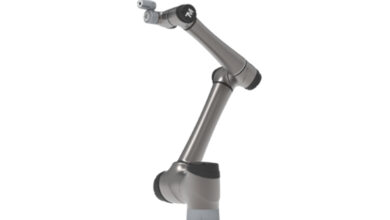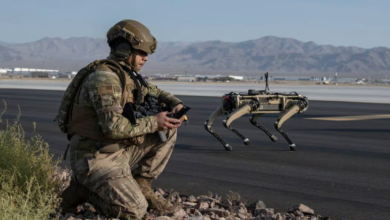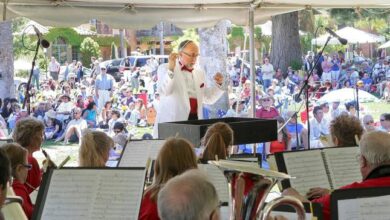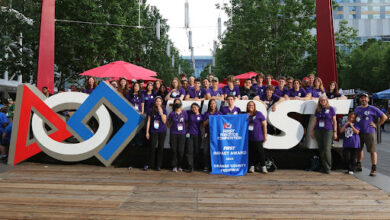Revolutionizing agriculture with robots at Philadelphia’s Burro

Growing up embedded in his family’s farm and construction businesses, Charlie Andersen was always the “machine guy.” He spent his time thinking about how to make work easier and more productive with technology — and has now translated that background into a fast-expanding startup.
Burro, which Andersen cofounded in Philadelphia in 2017, has a team of around 50 people who develop autonomous robots to work side-by-side with people.
“Building real-world systems that go outdoors, the great outdoors, and do real work — that is the biggest opportunity of our generation,” said Andersen, who serves as Burro’s CEO. “Imagine something in Disney’s WALL-E or like Star Wars’ R2-D2.”
The goal: Relieve workers of strenuous tasks, allowing them to focus on the more valuable parts of their job while also increasing productivity.
Construction is a potential use for Burro’s products, Andersen said, but the company’s first target has been agriculture, where worker duties range from pruning and picking to weed whacking, spot spraying, mowing, loading, transporting and more.
“Labor is frequently half of revenue. Just imagine — half of revenue goes to labor,” he said. “If you’re growing something, you can’t just move from California to Mexico seamlessly to find lower labor costs … you have to find ways to adopt automation.”
For instance, an eight-person crew using just one Burro can harvest 15% to 30% more fruit daily, per Andersen. A single Burro could also replace a tractor and its operator for tasks like towing trailers in nurseries.
Today, hundreds of the company’s robots are deployed worldwide in nurseries, vineyards, indoor and outdoor berry farms.
Earlier this year, Burro announced it had raised a $24M Series B from Catalyst Investors, Translink Capital and others. The funding will help with expansion, Andersen previously told Technical.ly, with the target of going from 300 robots deployed in January to 800 in operation by the end of the year.
“My goal ultimately is to become the category-defining, brand-name, people-to-pallet, skill-form-factor autonomous ground vehicle for work outdoors,” he said, “with the first point-and-click interface for movement near people
In Episode 41 of Founding Philly, Andersen shared his journey of building Burro, discussed the impact of autonomous vehicles in agriculture, and outlined his vision for the future of farming with robotics.
Before you go…
Please consider supporting Technical.ly to keep our independent journalism strong. Unlike most business-focused media outlets, we don’t have a paywall. Instead, we count on your personal and organizational support.




